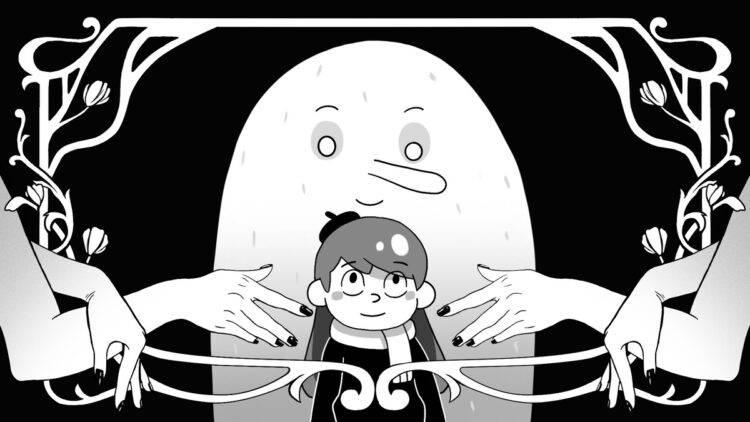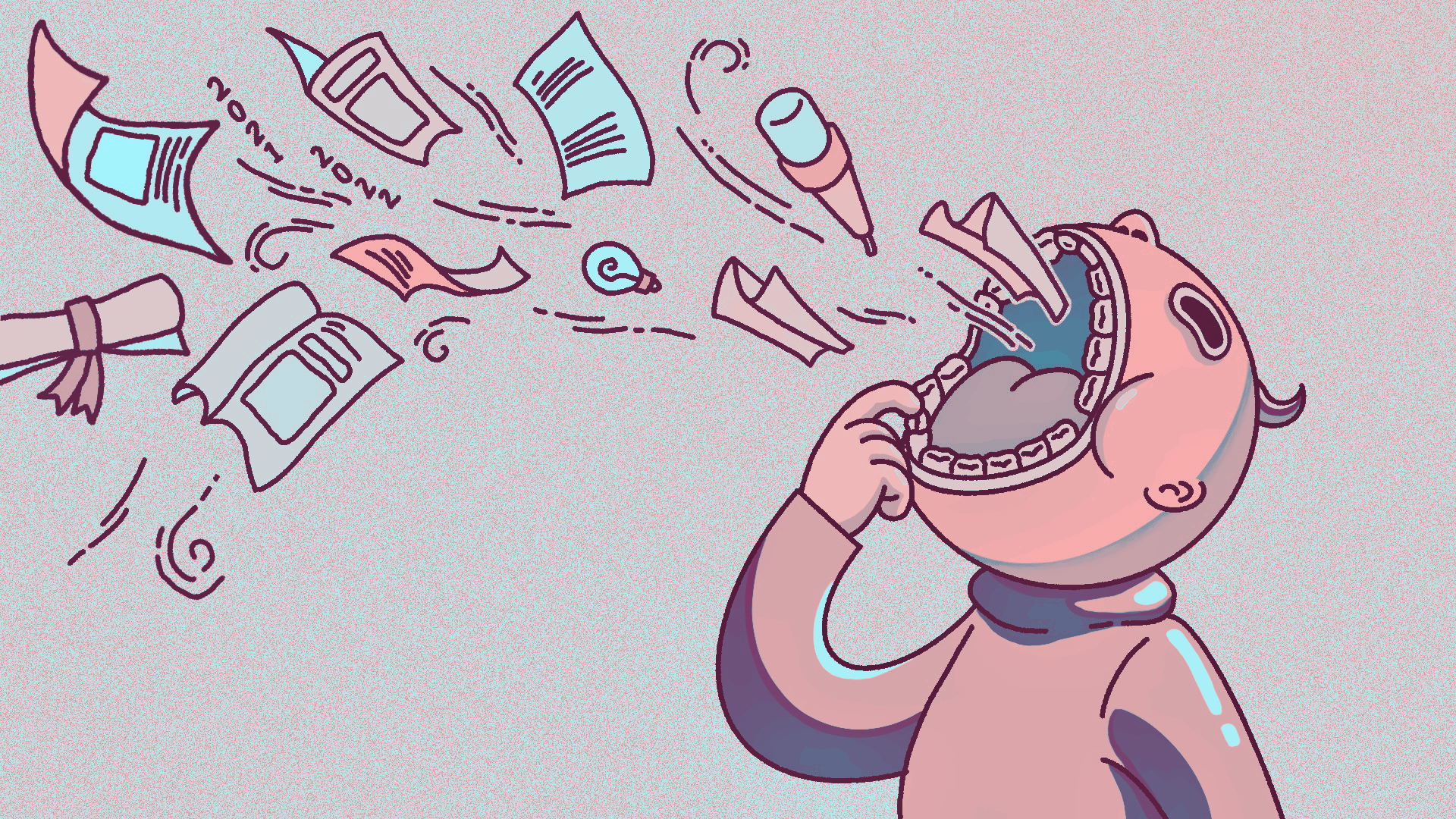
In “Loving the Monster,” Sidne K. Gard (BFAW 2025) explores the definitions, creation, and fascination with monsters in pop culture.
Released at the very end of December 2021, Netflix’s “Hilda and the Mountain King” is a movie that feels nostalgic on the very first watch. For me in particular, it was a perfect reminder of why I love monsters, cartoons, and my mother. It is a movie I am sure I will return to for years to come.
Initially a graphic novel by Luke Pearson and then a two-season series on Netflix, “Hilda and the Mountain King” is the latest installment in the adventures of the eponymous young blue-haired girl. The show and the graphic novel draw inspirations from Scandinavian folklore and the popular Moomin franchise. Hilda is smart, resourceful, and, most importantly, kind. With her mum, her pet deerfox, and her friends by her side, she goes through life befriending monsters of all sorts and running headfirst into mischief and adventure.
One of the creatures Hilda comes into conflict with most is trolls. Within the story, trolls are rock-like creatures that inhabit the forest. They turn to stone in sunlight, and in general are greatly feared by the humans who live in the city named Trollberg. One of the central conflicts of the show thus far has been why the trolls live around the city of Trollberg despite the way the humans treat them. “Hilda and the Mountain King” seeks to answer this question and delve further into the lore of the trolls and Trollberg.
The movie picks up right where the end of Season Two left off: After Hilda and her mum, Johanna, have returned home from a harrowing adventure, they wake up the following morning to find that Hilda and Baba, a baby troll, have swapped places. Now Baba is a chaotic toddler human in Johanna’s home while Hilda is a young troll in the stone forest with Baba’s mother and the other trolls. Hilda has been turned into the very monster she is supposed to fear. She experiences what being a troll means; she learns about their culture, their customs, their history, and their struggles. Meanwhile, Baba is getting to experience being human. Ultimately, the humans and the trolls aren’t so different from one another. Both cultures have monsters they fear and hate — each other.
I’ve always adored cartoons, more so than the average child. Shows like “Adventure Time” and “Gravity Falls” are part of the reason I am now here at SAIC learning to animate. But “Hilda,” in particular, has a special meaning in my heart. I even drew inspiration from “Hilda” for my final project in my first animation class. However, it was not until watching “Hilda and the Mountain King” that I realized why this show and these characters in particular resonate so strongly with me. It’s more than the beautiful animation (and it is beautiful. The opening credits alone for the movie are a masterpiece) or the lovely soundtrack. “Hilda” resonates with varied audiences so well because of Hilda’s love for the world around her — for the creatures she meets, her friends, and, most importantly, her love for her mum.
From the very beginning of the show, it’s clear how much Johanna and Hilda love each other. The first episodes of the series are even about Hilda and Johanna going from living on their own in the woods to adjusting to life in Trollberg where it’s not just the two of them. In Trollberg, Hilda has to learn to trust her mum enough to tell her about the adventures she goes on and the problems she faces, and Johanna has to learn when it’s okay to let go of her daughter and trust Hilda to know what she’s doing. They both have to grow to understand each other, but they always love each other even when they argue or disagree.
“Hilda and the Mountain King” quickly becomes a story about mothers and their children. Johanna is desperate to find Hilda and will go to any means she can to make sure she’s alright. All the while, the viewer and Hilda learn Baba’s mum is the one who switched Hilda and Baba in the first place, hoping her baby would be safer and happier among humans. Both Hilda and Baba do adapt to and even begin to like their new circumstances, but they also both miss their mums and want to return home.
Animation as a medium so often either kills off or villainizes mothers. The child protagonist is only able to discover who they really are and go on the adventures they want to when their mother is out of the picture. From “Cinderella” to “Steven Universe,” animated heroes either must mourn their mothers or fear them. But “Hilda and the Mountain King” breaks this mold. There are literal monsters who are mothers in the series, and yet they are not “monstrous” in the way animated mothers (and step-mothers) get portrayed.
In the first season of the show, Johanna does often hinder Hilda from her adventures, fearful of her daughter getting hurt. And Hilda at times does see her mum as the antagonist. They often disagree with each other about what the right thing to do is. But eventually Johanna comes to see the kindness and resilience Hilda has with both the creatures and humans she comes into contact with, and Hilda learns to understand her mum’s worries and be more honest with Johanna about her life.
“Hilda and the Mountain King” has four different mothers trying to do what’s best for their children. Johanna, Baba’s mother, the mum of one of Hilda’s friends, and, as we learn in the climax of the movie, the mother of all trolls. The children are still the main characters. They’re the ones who are going on adventures, trying to change the status quo of the way humans and trolls interact with each other. But their mothers are just as important. It is motherly love combined with the powerful kindness of Hilda and the other children that ultimately stops the trolls and the humans from going to war. In this case, loving the monster is learning to love your children… and your mothers.
Sidne K. Gard (BFAW 2025) is a queer writer and artist from New Orleans. They focus on identity based storytelling intersecting with pop culture. Currently, they are an F News Staff Writer and the host of The Eyeridium Podcast.







